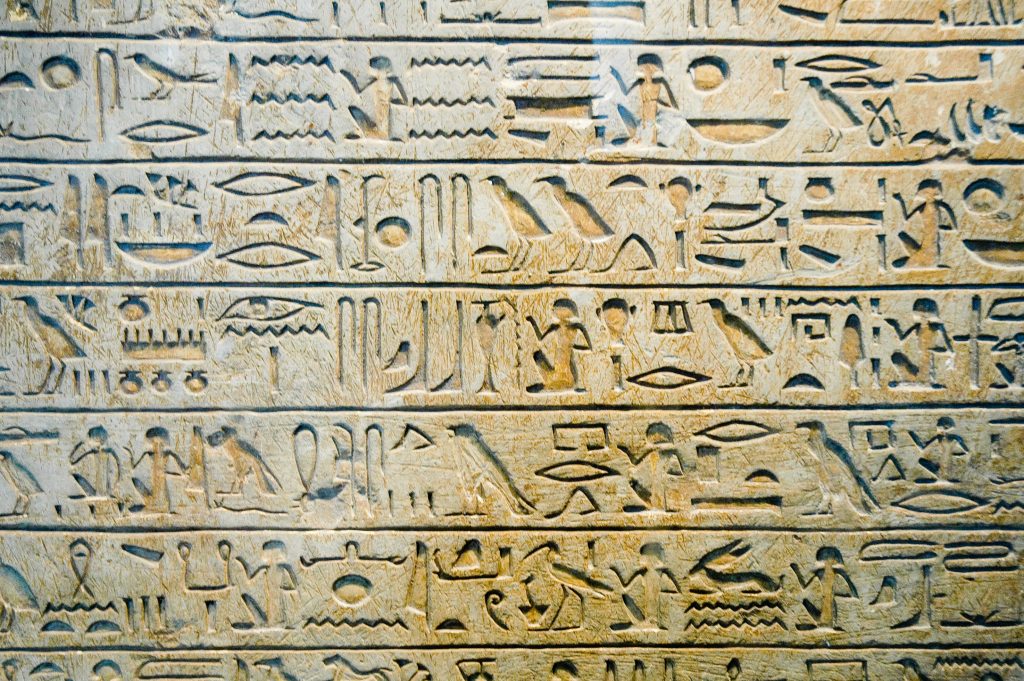
Ancient Egyptians believed that rather than creating art (for which they had no word), they were creating works of beauty that emulated from their profound reverence for the gods. It also reflected a great sense of order, giving rise to a distinct artistic style which remained virtually unchanged for over 3000 years. Here is a list of ten very important works of ancient Egyptian art.
Narmer’s Palette (31st Century BC): This 23 inch high palette is decorated on both sides and has the distinction of being one of the oldest known ‘canvases’ of ancient Egyptian hieroglyphic writing as well as being the oldest historical document in the world.
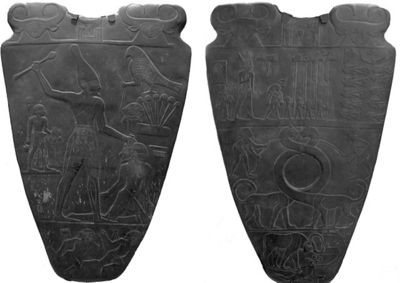
Khufu’s Statue (26th Century BC): The small ivory statue of Pharaoh Khufu (Cheops) is the only Khufu’s portrait discovered so far. Next to the Great Pyramid, the 7.5 cm (3 inch) statue is the only physical evidence of Khufu’s two decade-long reign. When it was discovered by the archaeological team, however, there was a small problem. They uncovered the statue without its head. Luckily, they managed to find the missing head and the builder of the Great Pyramid finally got a face.
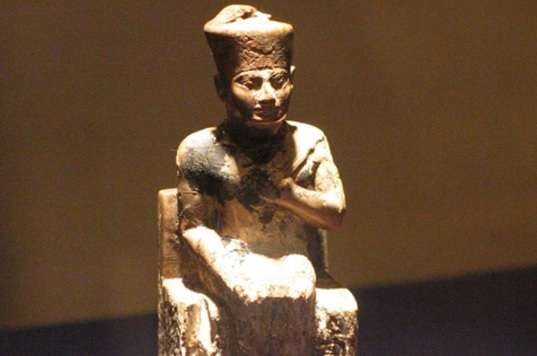
Egyptian Book of the Dead (16th Century BC): Known to ancient Egyptians as the ‘Book of Coming Forth by Day’, the scroll was entombed with various people who were wealthy enough to afford such vital guide through the Underworld. One of these scrolls, belonging to a woman named Anhai who died in about 1100 BC and is more than seventeen feet long when unrolled.
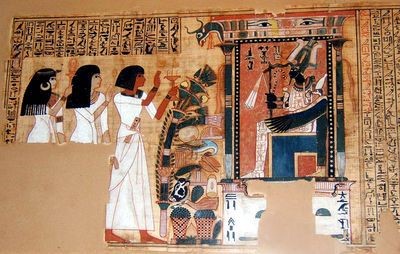
Astronomical Ceiling, Tomb of Senenmut (15th Century BC): Senenmut was the architect of the renowned Pharaoh Hatshepsut’s tomb complex although his own tomb is just as stunning. It features an astronomical map on the ceiling which is the world’s oldest map of its kind.

Thutmose III Statue (15th Century BC): A basalt statue of Thutmose III is an artistic masterpiece, immortalizing the sixth Pharaoh of the Eighteenth Dynasty. The stance of the statue and the gaze create an effect of a graceful yet powerful king.
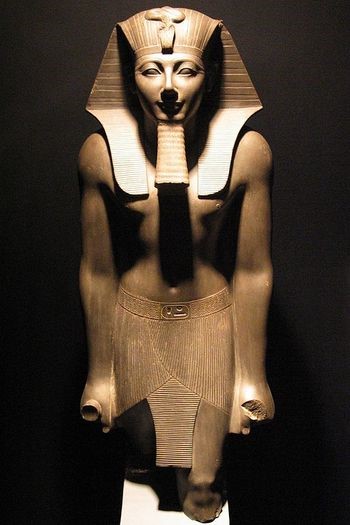
Amarna Period Art (14th Century BC): During this period ancient Egyptian art takes a distinctly unique form. People are depicted more realistically and life-like, their movement fluid, showing them in more intimate situations. Art wasn’t idealistically stiff and rigid anymore although the Pharaoh was always depicted lovingly with his family.
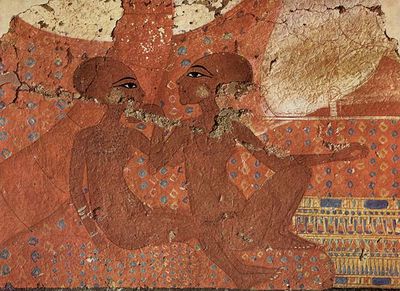
Nefertiti Bust (14th Century BC): Although little is known about Nefertiti, the bust made her one of the most iconic figures of the ancient Egypt and antiquity as a whole.

Tutankhamun’s Golden Death Mask (14th Century BC): Tutankhamun died at the age of 19 years, most likely from an infection which he developed after breaking his leg. He was buried with a twenty-four pound golden death mask that was placed over his head and shoulders. The mask is made from solid gold and is inlaid with blue glass, lapis lazuli and various semiprecious stones.
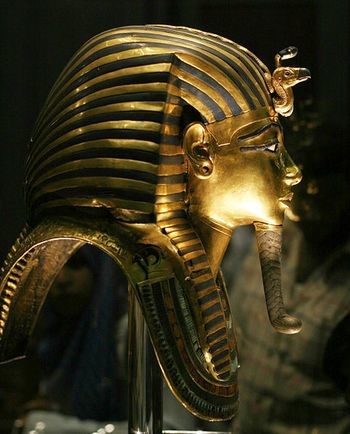
Throne of Tutankhamun (14th Century BC): The overall style of the throne is one of the finest examples of the Amarna Period art which is reflected in the sun disc on the backrest (symbolizing Amun), more naturally styled birds and plants, scenes of the affectionate royal couple, and the physical features of the Pharaoh and his queen who are depicted with a high degree of realism.

Statue of Cleopatra VII Philopator (1st Century BC): The black basalt statue is one of the most pristine images of the last Egyptian pharaoh, Cleopatra VII, presenting her in the midst of a stride, wearing a long form-fitting dress.
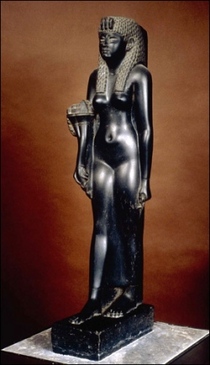
Check out our display of gorgeous art books on the wonders of ancient Egyptian art in the Art Room and in the Art Room display case on the second floor of the library.
















No Comments so far ↓
Like gas stations in rural Texas after 10 pm, comments are closed.